The miracle of life is a fascinating journey in all creatures, but there is something particularly majestic about the horse birth process. Understanding how horses reproduce, from the horse breeding cycle to the careful nurturing of a newborn foal, is essential for breeders and equine enthusiasts alike. This post delves into the captivating world of equine reproduction, shedding light on the gestation period in horses, identifying mare labor signs, and detailing the stages of horse labor. Proper newborn foal care is also crucial, as is knowing when to intervene with veterinary assistance. Let’s explore the intricate process of breeding horses and the beginning of life for these magnificent animals.
The Complexity of Horse Breeding
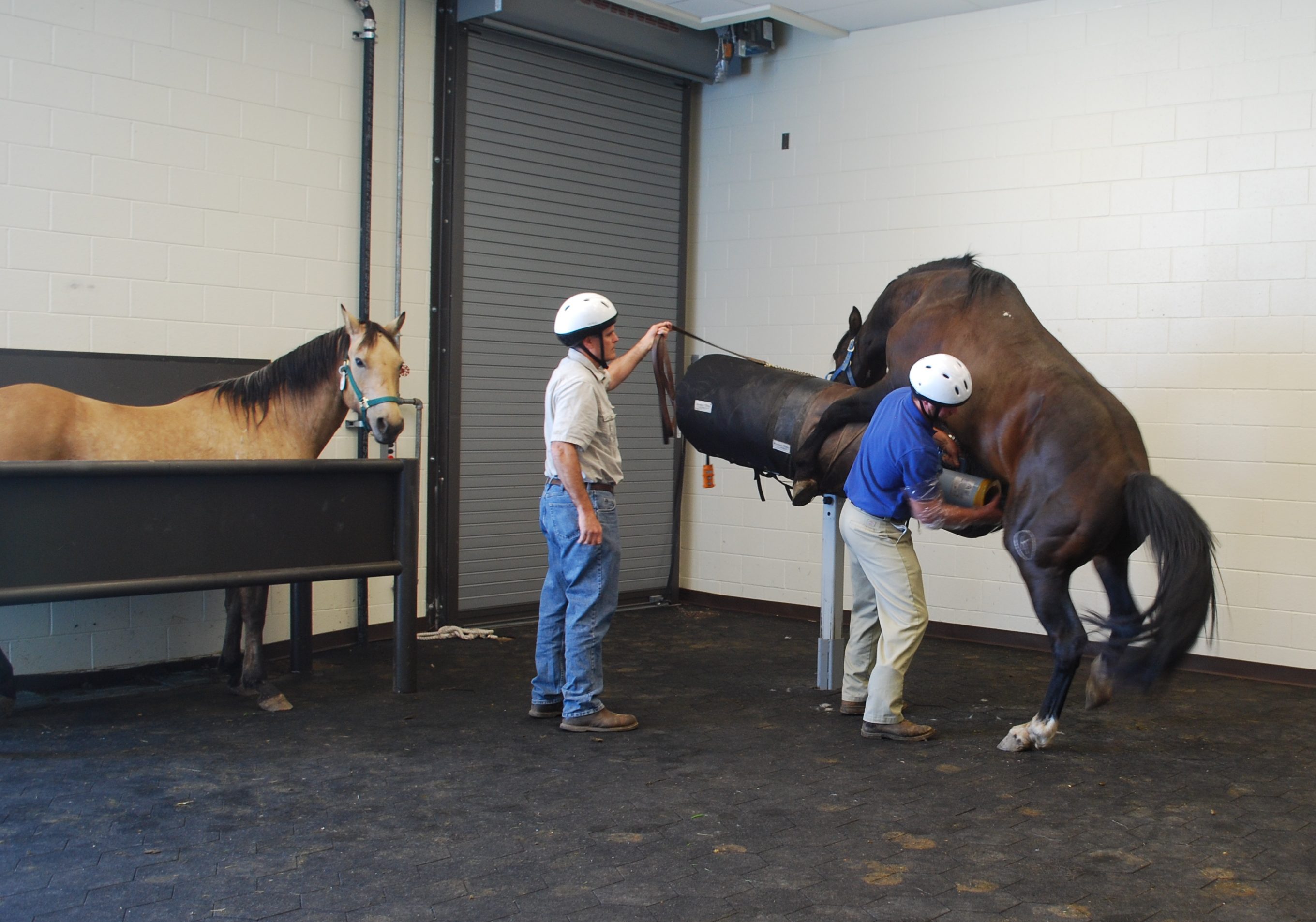
Delving into horse breeding reveals a complex interplay between nature and meticulous scientific management. It’s a field where the mare’s well-being is paramount, and precision timing enhances the prospects for preserving the noble equine lineage. Beyond just the physical act of mating, the reproductive health of the mare, understanding her hormonal cycles, and considering genetic factors are central to successful horse breeding.
Reproductive Health and Genetics
Reproductive health is vital, and genetics play a significant role in the success of breeding programs. Breeders must consider the genetic make-up and compatibility of potential breeding pairs, recognize hereditary traits, and be aware of possible inheritable health conditions. Advances in DNA technology aid breeders in making informed decisions to produce healthy offspring.
Advances in Breeding Technologies
The field of horse breeding has been transformed by technological advancements. Innovations like artificial insemination and embryo transfer help breeders circumvent natural barriers to breeding and contribute to the genetic diversification of the species. These techniques also promote the health and safety of horses by minimizing the risks associated with traditional breeding methods.
Nutritional Impact on Fertility
Proper nutrition is essential for reproductive success in horses. A diet rich in essential nutrients is necessary to prepare both the mare and stallion for the breeding process. This dietary balance supports the myriad of reproductive functions and enhances fertility, aiding in the conception and development of a healthy foal.
Understanding Equine Breeding Behaviors
Behavioral patterns in horses during the breeding season are crucial for breeders to understand. Observing and interpreting these cues can lead to more effective breeding practices. Additionally, managing the stallion’s behavior is important for the safety and well-being of both the mare and stallion during reproduction.
With a holistic approach that integrates knowledge of equine biology and behavior, breeders and experts are dedicated to fostering the birth of vibrant foals. As equine reproductive science advances, the strategies used by professionals will undoubtedly lead to improved outcomes in horse populations.
Insights into the Equine Reproductive Process
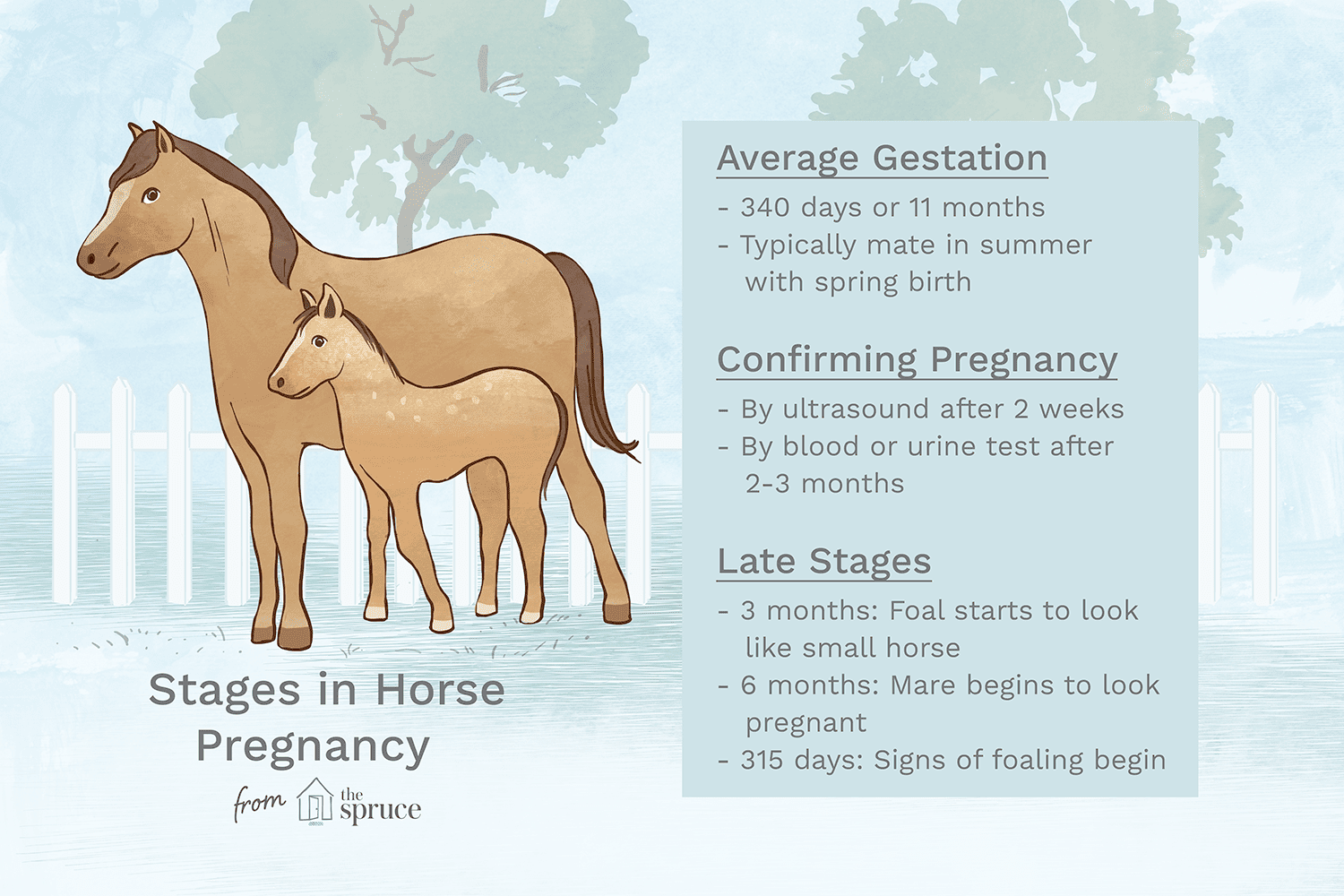
For enthusiasts devoted to breeding horses, grasping the subtleties of their reproductive process is critical. This entails recognizing the mare’s estrus, a period influenced by seasonal changes in daylight and temperature, which prepares her for conception. A mare’s cycle, approximately three weeks long, is a signal for breeders to determine the optimal timing for mating to enhance the likelihood of pregnancy.
Optimizing Conditions for Horse Breeding Success
- Creating a calm atmosphere to support consistent estrous cycles
- Implementing a diet tailored to reproductive needs
- Conducting comprehensive health checks prior to breeding
Light Therapy and Reproductive Timing
Breeders can strategically influence a mare’s cycle by manipulating environmental lighting, a technique known as “light therapy.” This simulates longer daylight periods, inducing an earlier onset of reproductive cycles, which can lead to more regimented breeding timelines.
Feeding for Reproductive Success
A well-devised nutritional program is essential to enhance fertility in horses. Diets must be carefully crafted to include necessary nutrients that support the reproductive system. For instance, incorporating essential fatty acids can positively affect hormones and egg quality, while the stallion’s diet impacts sperm health.
Assessment Tools for Timing Insemination
Breeders employ various diagnostic measures to identify the most favorable time for insemination, such as:
- Using palpation and ultrasound to evaluate reproductive health
- Monitoring hormone levels to forecast ovulation
- Observing mare responses to a stallion to detect estrus signs
These techniques provide a detailed understanding of the mare’s reproductive timing, enhancing the chances for successful conception.
Advancing Equine Genetics
Genetic evaluation has become an integral part of the breeding process, enabling the identification of carriers of genetic disorders and assisting in the selection of optimal breeding pairs. Such precision in selection not only aims to yield healthier offspring but also improves the genetic diversity within the breed.
Coordinating Breeding with Stallion Health
Aligning the stallion’s reproductive condition with the mare’s cycle is vital. Breeders must ensure that the stallion’s sperm quality and overall health are maintained, especially during peak breeding times. Sound management practices, like regular exercise and preventing excessive breeding demands, contribute to his reproductive well-being.
Knowledge and careful management of these elements within the horse breeding cycle are instrumental for breeders striving to foster conditions that favor conception, thus playing a key role in the advancement and preservation of equine breeds. The dedication breeders show in refining each phase of the reproductive process underscores their commitment to the prosperity of these esteemed animals.
Enhancing Mare Care During Pregnancy

Throughout the lengthy pregnancy of a mare, typically lasting from 340 to 365 days, vigilant care and adjustments in management are critical to ensure the health of both the mare and the developing foal. Breeders must provide a peaceful environment and adapt the mare’s nutrition to meet the evolving needs of both mother and offspring. Regular health assessments by a veterinarian, including ultrasounds, are crucial to monitor the foal’s development and promptly address any health issues.
Stress Reduction and Environmental Stability
A tranquil and consistent environment is vital during the mare’s pregnancy to prevent stress-related complications. Breeders should maintain a regular routine, with light exercise as advised by a veterinarian, to support the mare’s physical condition without causing undue strain.
Adapting Nutrition for Developmental Needs
The nutritional plan for a pregnant mare should be carefully calibrated to support the growth of the foal, with an emphasis on quality forage and a balanced intake of proteins, vitamins, and minerals. Veterinary guidance may be sought to supplement any nutritional gaps that arise as the pregnancy progresses.
Foal Development and Health Tracking
Continuous veterinary involvement is paramount in the lead-up to foaling. Veterinarians can employ a variety of non-invasive methods, such as ultrasonography, alongside routine blood work to ensure both the mare and foal remain healthy throughout the gestation.
Optimizing Foaling Conditions
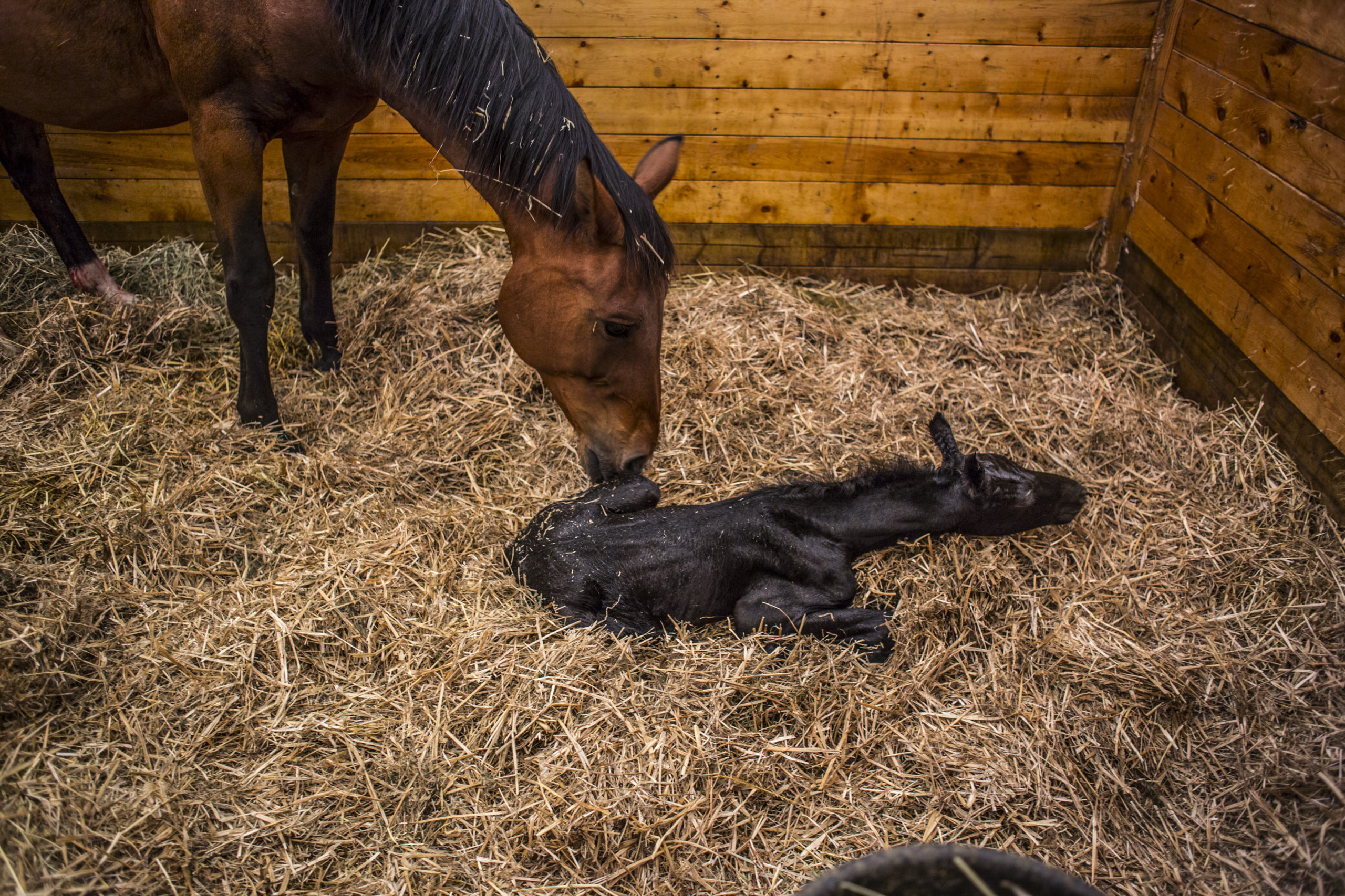
As the mare approaches the end of her pregnancy, careful preparation for the birth is essential. A designated foaling area should be prepared, ensuring it is clean, quiet, and well-equipped with medical supplies for any emergencies. Comfortable bedding in the stall is important for the mare’s comfort during labor.
Designing a Suitable Foaling Environment
The foaling stall should be set apart from daily stable activities to provide a tranquil space for the mare, with enough room to comfortably move and adjust during labor, and stocked with fresh, hygienic bedding to welcome the new foal.
Assembling Essential Supplies for Birth
A well-stocked foaling kit is crucial for the delivery, containing items such as:
- Clean towels and sterile gloves to assist with the birth
- Antiseptic solutions for umbilical cord care
- Thermometers to monitor for signs of impending labor
Anticipating Labor through Behavioral Changes
Recognizing shifts in the mare’s behavior is key to detecting the onset of labor. Breeders should be alert to signs like nesting or changes in temperament, which may signal that foaling is near, necessitating increased observation.
Leveraging Technology for Foaling Supervision
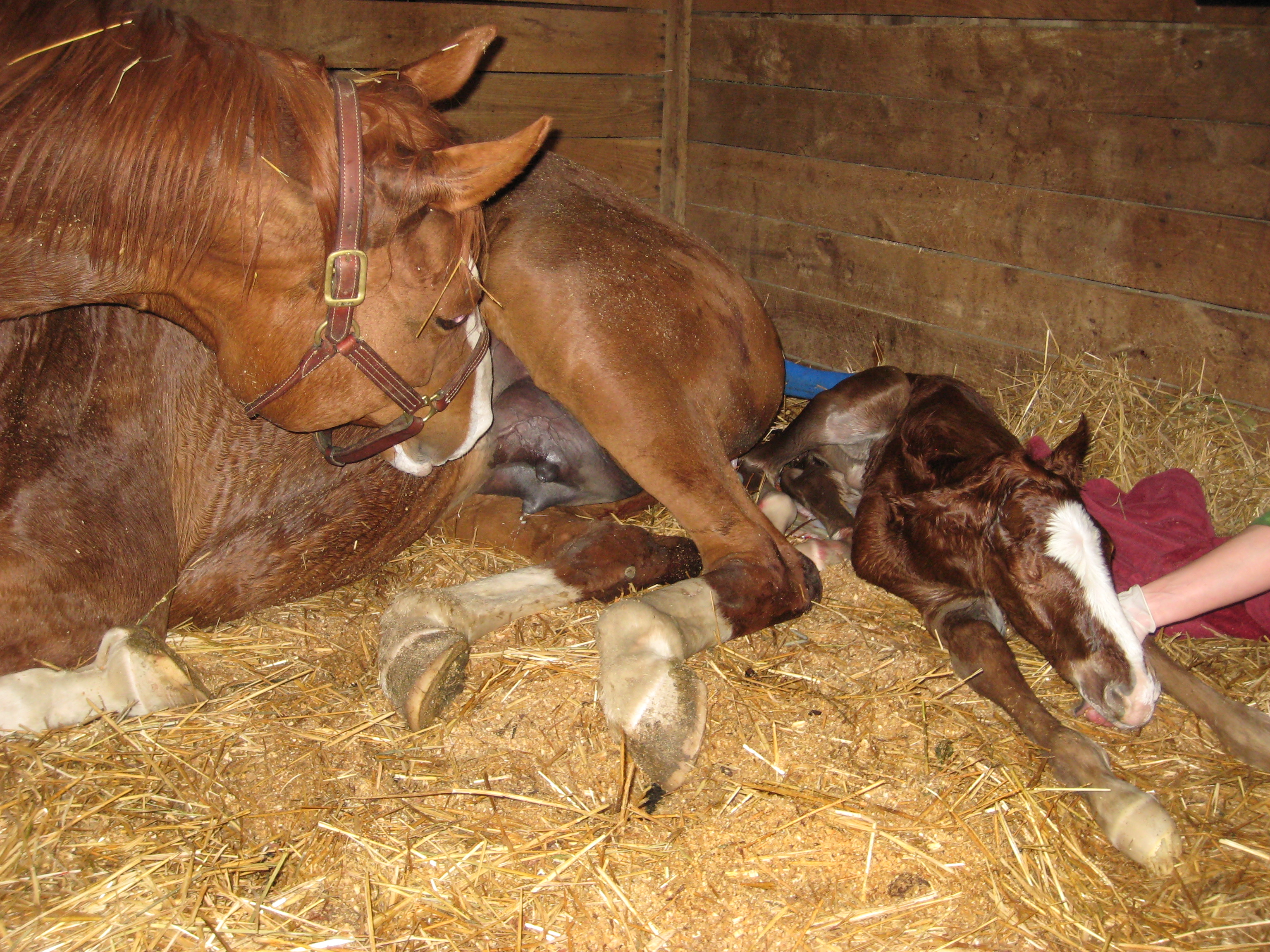
Modern breeding operations benefit greatly from technological aids that enhance foaling supervision while minimizing disturbance to the mare. Devices such as remote cameras and specialized alarms can inform breeders of labor’s commencement, allowing for timely intervention if needed.
Implementing Remote Monitoring Solutions
Equine caretakers can now utilize:
- Video surveillance within the foaling stall
- Automated alert systems that indicate the start of labor
- Applications to log mare labor signs and activities
Advances in Foaling Assistance
With these technologies, breeders can maintain a careful watch over the foaling process, ensuring they are prepared to respond promptly to any mare labor signs, thus safeguarding the health of both mare and foal during this critical period.
Employing a combination of attentive care, environmental control, and innovative technology is integral in managing the horse birth process. Such thorough preparation helps breeders to provide the best possible care during the gestation period in horses and foster the arrival of a thriving foal.
Guiding Mares Through the Birthing Process
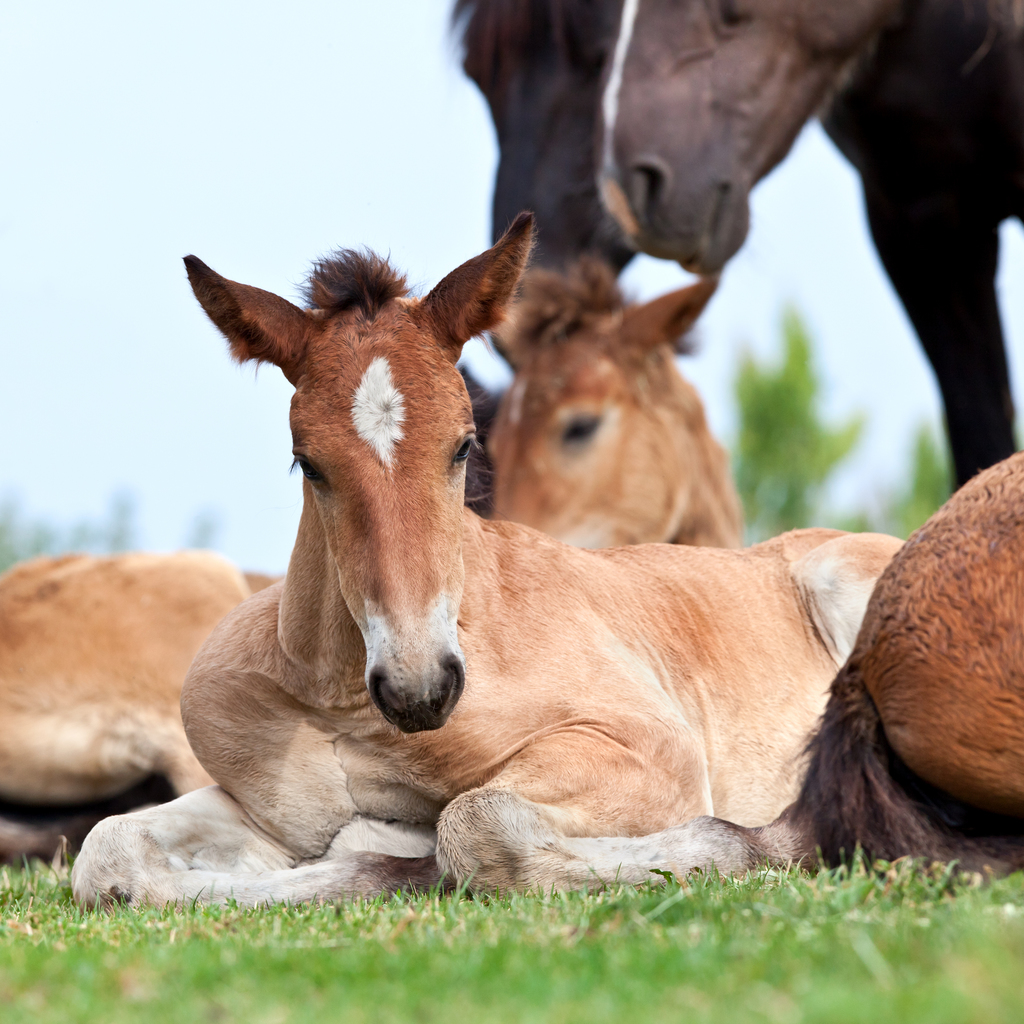
The birthing process in horses is an extraordinary event that demands comprehensive knowledge of the mare’s physiological changes. The stages of horse labor represent a natural progression leading to the moment a mare gives birth. Insight into these stages is essential for breeders to offer adequate support and contribute to a favorable birth.
Commencing Labor: Recognizing the Initial Signs
The beginning of labor signals that the mare is ready to deliver. Breeders may notice a variety of signs indicating this stage is underway:
- Restlessness and signs of discomfort
- Increase in sweating
- Developing contractions that gain in frequency
These symptoms reflect the mare’s hormonal adjustments as the birthing process commences. Monitoring during this phase, which can span from one to four hours, is vital for timely support.
Active Labor: Facilitating the Foal’s Arrival
Once in active labor, the mare’s contractions intensify, leading up to the foal’s delivery. This period can be brief, lasting from 20 minutes to an hour. It is characterized by:
- The appearance of the foal’s front hooves and head
- The foal’s body gradually being delivered
Intervention during this stage is generally minimal, allowing the mare’s natural processes to facilitate the birth unless complications are evident.
Concluding Labor: Ensuring Complete Afterbirth Expulsion
The final labor stage involves the mare expelling the placenta. Close observation is necessary to ensure full expulsion, as retention can lead to health issues. Key points include:
- Detachment of the placenta typically starts soon after the foal’s birth
- It should be expelled completely within three hours
- Checking the placenta’s integrity ensures no remnants remain
Timely veterinary assistance is critical if the placenta fails to pass within the expected duration. Breeders must maintain a calm environment for the mare to recover and bond with her foal.
Each labor stage demands specific care and attention to maintain the mare and foal’s health. Recognizing the nuances of these stages enables breeders to create conditions favorable for a successful birthing experience. Such expertise in equine parturition is fundamental to responsible horse management, promoting the health and continuation of the species.
Essential Practices for Supporting Newborn Equine Health
Providing attentive care to a newborn foal is a critical aspect of equine management. The initial hours after birth are instrumental in shaping the foal’s future health and development. This guide emphasizes the importance of informed and proactive measures during these foundational moments, focusing on health assessments, nutrition, and establishing a nurturing environment.
Initial Examination and Careful Intervention
Immediately following birth, it’s imperative to perform an initial examination to ensure the foal’s wellbeing. Key steps include:
- Checking for clear airways and consistent breathing
- Detecting any birth defects
- Disinfecting the umbilical cord to prevent infection
- Observing the foal’s attempts to stand and nurse
Foundational Nutrition for Immune Development
During the first day, it’s essential for the foal to ingest colostrum, which provides crucial antibodies for immune system development. Should the foal be unable to nurse, caregivers must find alternative feeding solutions, such as hand-feeding colostrum from the mare or a replacement.
Monitoring for Early Signs of Health Issues
Vigilant monitoring of the foal’s heart rate, respiratory rate, and body temperature helps in the early identification of health concerns. Any irregularities in these vital statistics should prompt a consultation with a veterinarian.
Attentiveness to Hydration and Digestive Function
Ensuring that the foal remains hydrated and is able to pass meconium within the first day is vital. Any complications in these areas may necessitate medical intervention to prevent dehydration or digestive blockages.
Preventive Care Against Hypothermia
Protecting the foal from hypothermia is particularly important. Caregivers should provide a warm, moisture-free environment, with supplemental heating if necessary, while being cautious to avoid overheating.
Fostering Mare and Foal Bonding
Promoting a healthy relationship between the mare and her foal is an integral part of care. This bond facilitates the foal’s sense of security and proper nursing, while aiding the mare’s maternal instincts. Close observation is needed to confirm that the mare is behaving in a nurturing manner.
Evaluating and Treating Limb Irregularities
Inspecting the foal’s limbs for any irregularities is essential. Some limb issues may resolve naturally or with mild exercise, but others might require veterinary care, such as splinting or corrective bandaging.
Adhering to these care practices ensures a healthy start for the foal, laying a solid foundation for its future. Breeders, veterinarians, and equine caretakers must stay attentive and responsive to the foal’s needs to guarantee optimal care from the outset.
Proactive Management of Foaling Challenges
A comprehensive approach to foaling includes recognizing and addressing potential complications to ensure the safety of both the mare and the newborn foal. Breeders must remain vigilant and prepared to act swiftly should any issues arise during this critical time. This segment highlights the essential steps to manage such complications effectively, underscoring the need for prompt and knowledgeable intervention in the interest of equine welfare.
Detecting Early Signs of Trouble in the Mare
Awareness of the expected labor sequence allows breeders to notice when a mare is experiencing difficulties. Indicators that may require immediate attention include:
- Persistent agitation or rolling, signaling discomfort
- Unusual discharge or hemorrhage prior to the foal’s emergence
- Stalled labor with ineffective contractions or lack of progress toward delivery
Recognizing these signs should lead to a prompt examination and determination of whether to provide direct assistance or seek emergency veterinary services.
Addressing Foal Presentation Issues
Incorrect positioning of the foal can complicate the birthing process. Breeders may need to intervene carefully to adjust the foal’s position if deemed safe. Situations requiring repositioning include:
- A backward or breech foal presentation
- Front hooves or the head not aligned for passage through the birth canal
Any repositioning should be done with extreme caution to prevent harm. If breeders are not confident or encounter difficulty, veterinary support is essential.
Seeking Professional Veterinary Aid
Some birthing complications necessitate professional veterinary care. Circumstances that demand the expertise of a veterinarian encompass:
- Substantial hemorrhage in the mare during or after delivery
- Unsuccessful repositioning of the foal, leading to entrapment
- Extended labor beyond typical duration without any delivery progression
- Evidence of extreme pain or shock in the mare
Veterinarians are equipped to conduct necessary surgical interventions to mitigate these critical situations.
Addressing Post-Birth Concerns
Attentive postpartum observation is crucial to detect and address complications such as:
- Retained placenta, which poses a risk of infection or serious complications like laminitis
- Uterine prolapse, an emergency requiring immediate veterinary response
- Lacerations in the reproductive tract leading to significant blood loss
- Lack of uterine contractions post-birth, raising the risk of hemorrhage
Early post-delivery monitoring and intervention can be critical for the mare’s health and recovery.
Ensuring the Mare’s Postpartum Well-being
Postpartum care is paramount for the mare’s recovery and her ability to care for the foal. Considerations include:
- Maintaining a sanitary and restful space for the mare
- Offering ample fresh water and nutritious food to aid her recuperation
- Regularly checking her vital signs and observing her behavior for abnormalities
- Watching the mare’s interactions with her foal to confirm effective bonding and nursing
Diligent care following delivery is essential for the health and future reproductive capacity of the mare.
Effective management of foaling complications is key in preventing lasting health issues for the mare and her foal. This entails a combination of vigilant surveillance, readiness to act, and informed decision-making. Breeders can significantly enhance the likelihood of successful foaling outcomes by being well-equipped to navigate these challenges.
For all the horse enthusiasts out there, understanding the life cycle of these magnificent animals can be both fascinating and educational. If you’re curious about the breeding process, our article on how horses are bred provides a detailed look into the journey from mating to foaling. Once these majestic creatures come into the world, you might wonder about their naming conventions. Dive into our exploration of how horses are named to discover the traditions and rules that guide this unique aspect of horse ownership. Additionally, the gear that horses wear is not only for show but also serves practical purposes. Learn more about equine attire by reading our piece on what horses wear, which covers everything from saddles to horseshoes. Whether you’re a seasoned equestrian or simply have a love for horses, these articles will enrich your knowledge about these noble animals.
Postpartum Mare Care
After the foal’s arrival, the mare’s health remains a top priority. Proper postpartum care ensures that she recovers fully and maintains the ability to care for her foal effectively.
Managing the Mare after Foaling
Management includes monitoring for signs of postpartum complications, such as uterine infections or excessive bleeding, and supporting the mare with adequate nutrition and rest.
Resuming the Horse Breeding Cycle Postpartum
Depending on the mare’s health and breeding goals, she may re-enter the horse breeding cycle. However, it is crucial to allow sufficient time for her to recuperate before considering another breeding season.
In conclusion, the process of how horses are born is a delicate symphony of nature and nurture. From the strategic planning of the horse breeding cycle to the vigilant care during the gestation period in horses, each step is pivotal in bringing a healthy foal into the world. Understanding the horse birth process, recognizing mare labor signs, and being well-versed in the stages of horse labor are all part of responsible breeding practices. Moreover, newborn foal care and addressing potential complications are just as crucial for ensuring the continuation of these magnificent animals. Whether you are a seasoned breeder or an equine enthusiast, appreciating the complex journey of equine reproduction can deepen your connection to these extraordinary creatures.



